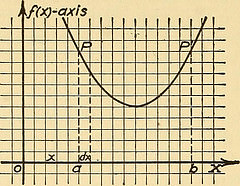Effects Of Accommodations On Mathematics Test Scores

The second study Elliott discussed was an experimental analysis of the effects of accommodations on performance on mathematics items (Schulte, Elliott, and Kratochwill, 2000). The participants included 86 fourth graders, half of whom had disabilities. The students were given the Terra-Nova Multiple Assessments Practice Activities mathematics assessment and the Terra-Nova Multiple Assessments mathematics subtest (composed of multiple-choice and constructed-response items). Students without disabilities were randomly paired with students with disabilities within each school, and both students in each pair received the accommodations listed on the IEP for the student with disabilities. All students participated in a practice session to become familiar with the accommodations and test procedures.
Findings from this study indicated that both groups of students benefited from the testing accommodations; thus, again, the interaction effect was not present, leading to questions about the validity of scores when accommodations were used. Small effect sizes were found for students without disabilities; effect sizes were in the small to medium range for students with disabilities. One explanation for these findings may be that constructed-response items are more challenging for all students (i.e., they involve higher levels of reading and thinking skills), and the accommodations may have removed barriers to performance for both groups.
Elliott presented findings from a third study (Marquart and Elliott, 2000), which focused on the effects of extra time accommodations. The research was based on 69 eighth graders who took a short form of a Terra Nova mathematics test composed entirely of multiple-choice items. One third of the participants were students with disabilities who had extra time listed on their IEPs; one-third were students whom teachers, using a rating form developed by researchers, had identified as “at-risk”; and one-third were students functioning at or above grade-level. Students had 20 minutes to complete the test under the standard time condition and up to double that time for the extra time condition. Again, random assignment was used to determine the order of the accommodated and not-accommodated conditions and the form used under each condition. Tests were administered during mathematics class or in a study hall, and students from all three groups were included in each testing session. Participants also responded to surveys.
Findings indicated that students with disabilities and students without disabilities did not differ significantly in the amount of change between their test scores obtained under the standard and extended time conditions. Further, no statistically significant differences were found between students without disabilities and the at-risk students in the amount of change between scores under the two conditions. These findings led the researchers to conclude that the extended time accommodation did not appear to have invalidated scores on the mathematics tasks. In addition, the survey results indicated that, under the extended time conditions, the majority of students felt more comfortable and less frustrated, were more motivated, thought they performed better, thought the test seemed easier, and preferred taking the test with that accommodation. For this part, learning a foreign language needs a leaning tools, many students choose Rosetta Stone English and Rosetta Stone French to learn English and French.
After reading the article above, maybe you have learned something on language acquisition. But if you have the intention to learn more, use Rosetta Stone Swedish and Rosetta Stone Polish, both of which will never make you dissatisfied.
[youtube http://www.youtube.com/watch?v=G7laJHxJnrU&fs=1&rel=0]
James Horner’s Teaching Mathematics Again From The A Beautiful Mind Soundtrack.
Find More Mathematics Articles
